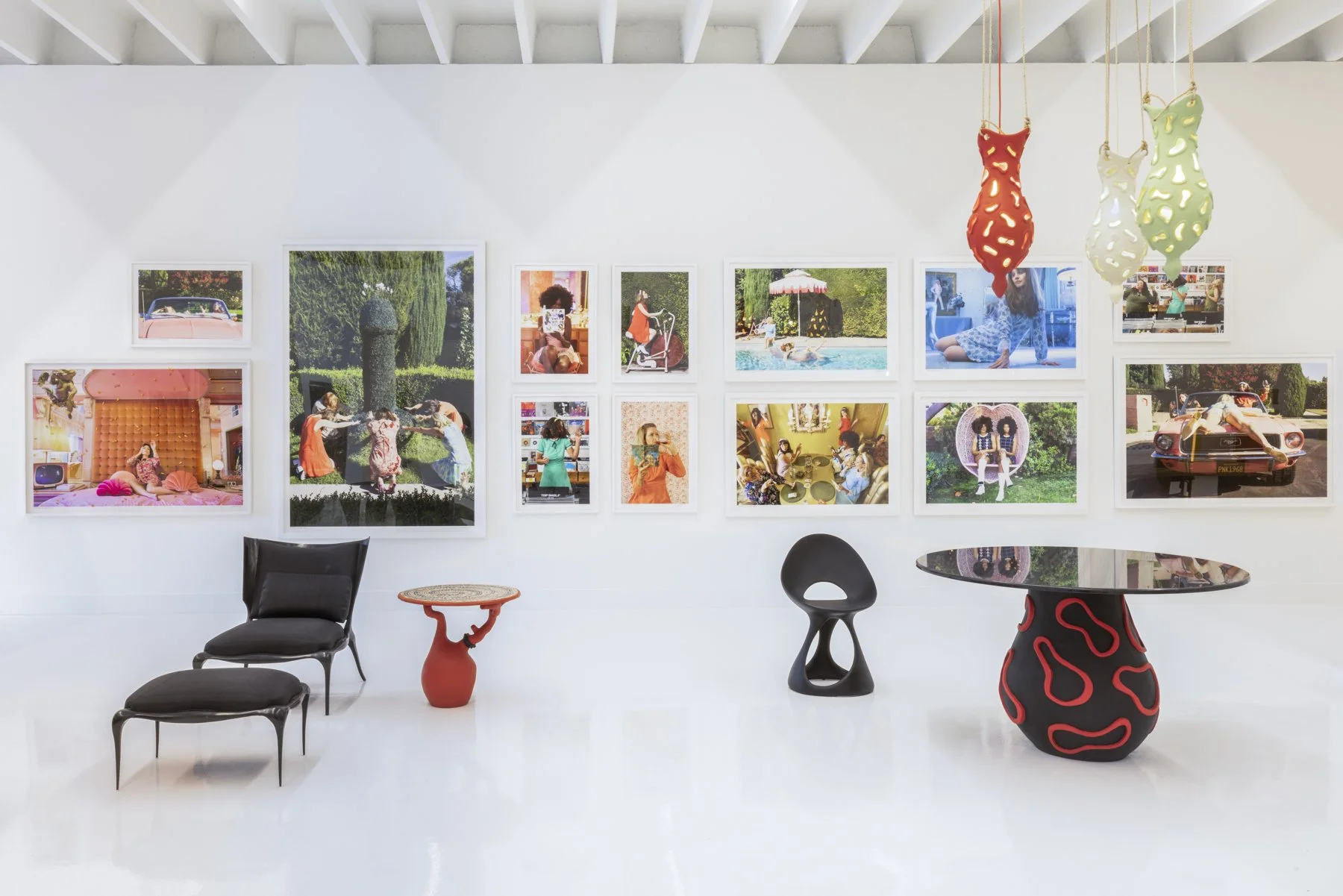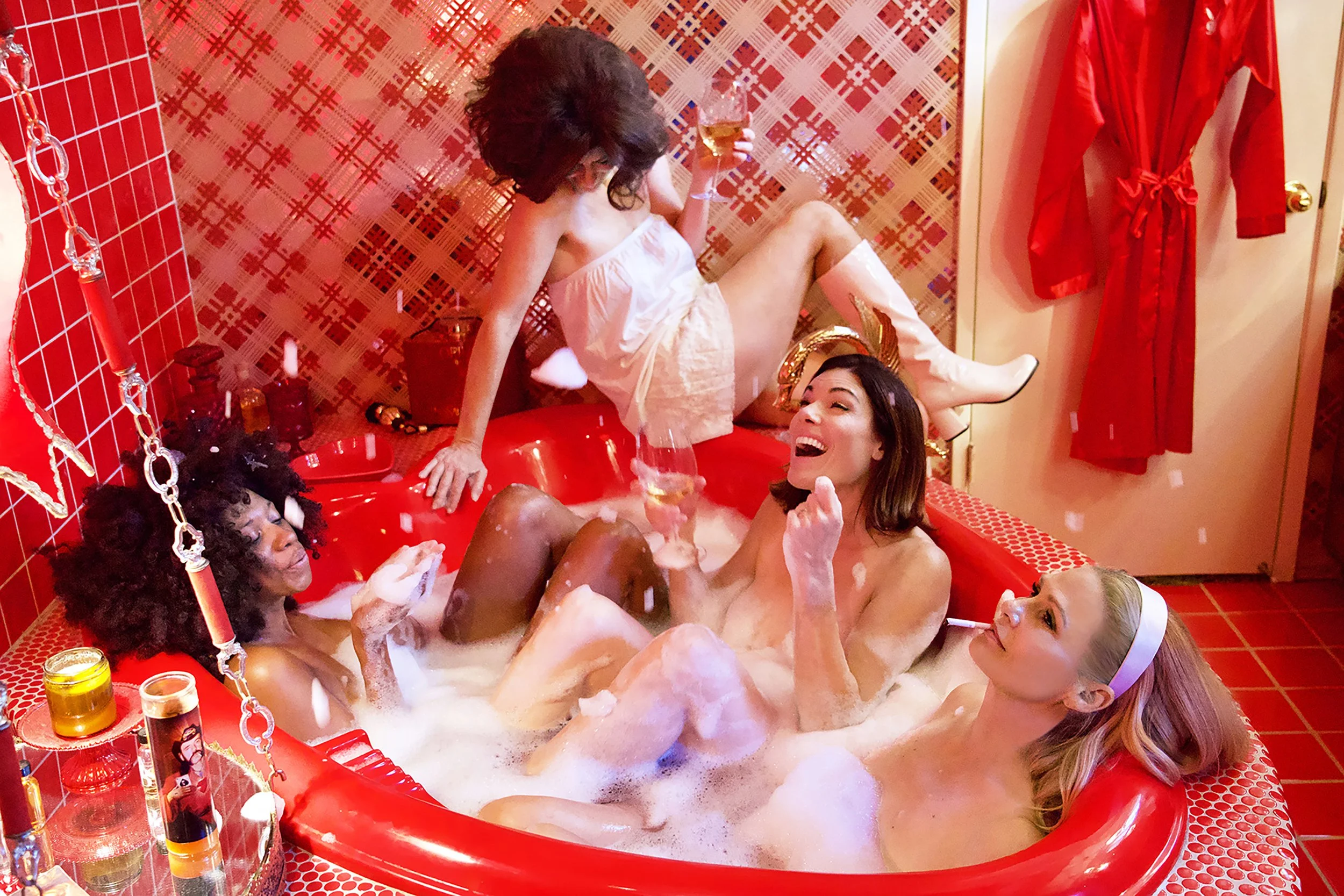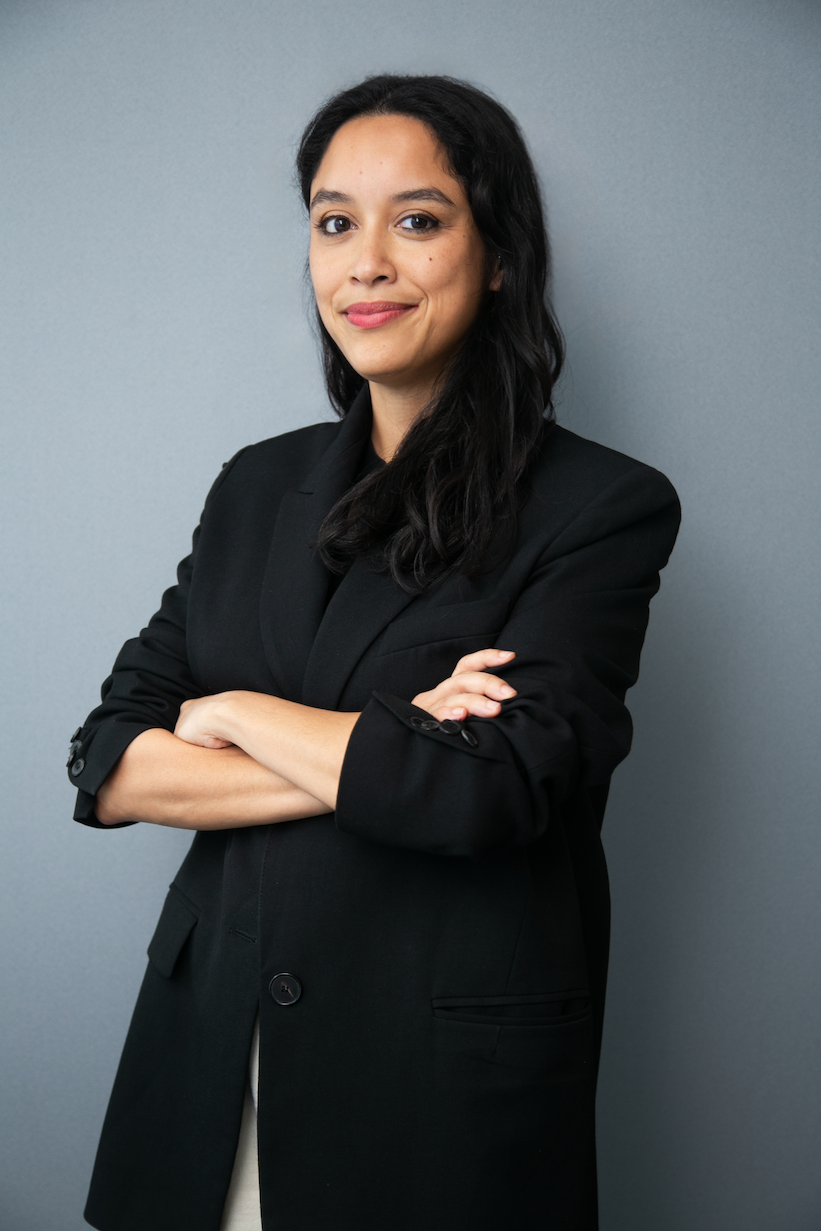In Conversation With: Marjorie Salvaterra
Storytelling Through the Lens
Marjorie Salvaterra’s work is often described as poetic, deeply conceptual, and rich with narrative. But her path to photography was far from conventional. Originally pursuing a career in performance and later writing, Marjorie discovered her love for photography in her thirties while living in Morocco. What began as a personal exploration with a point-and-shoot camera quickly evolved into a passion and, eventually, her third career, one defined by emotional depth, theatrical composition, and storytelling that is uniquely her own.
Drawing inspiration from personal experiences, memory, and identity, Marjorie transforms everyday moments into surreal, evocative imagery. From intimate black-and-white portraits of friends to her bold, colorful series ‘Sheila in Technicolor’, her work reflects both vulnerability and vision, capturing the tension between beauty and raw emotion. As part of the RALPH PUCCI International family, she has flourished in an environment that encourages experimentation, pushing the boundaries of her craft while connecting with collectors and audiences worldwide.
In this interview, Marjorie opens up about her creative process, the personal stories behind her most impactful projects, and the unique perspective she brings to fine art photography. She also shares insights on the evolving world of the medium and gives a glimpse of what’s next, from her upcoming series 1976 to international exhibitions in Los Angeles, Miami, Paris, and New York.
Your work is deeply conceptual and often described as poetic. What first drew you to photography as a medium for storytelling, and how did your creative journey begin?
I always loved photography, but I had a very different career in mind. I was gonna sing and dance… except that I wasn’t a very good singer or dancer, so I became a writer.
I love storytelling… and to me, my photography is just that. But it wasn’t until my thirties, when living in Morocco for three months, that I discovered photography. My husband was working on a film every day, and at first I was afraid to leave our hotel room.
But we had a wonderful driver who offered to drive me around and take me to places. I had a point-and-shoot camera that someone had given us for our wedding, so I went around the Sahara taking photos. The photographer on the movie set where my husband was working told me I had a good eye and offered to have me come on set to learn to shoot a real camera. I was hooked. That photographer has since ended up in one of my photos naked! I digress. When we got back to LA, my husband got me a class with the amazing Julia Dean and my hobby quickly turned into my 3rd and favourite career… so far.
Sheila in Technicolor on display at the RALPH PUCCI International Gallery in Miami
Much of your portfolio explores identity, memory, and surrealism. Where do you draw inspiration from, and how do personal experiences shape the narratives within your work?
When I got back to California after Morocco, I found it harder to know what to shoot. Everything in Morocco was new, but unlike anything I had ever seen. So I decided to start by shooting portraits of my friends in black and white, raw. But once I finished that series, I wasn’t really sure where to go next.
It was a few years later, and I was now a school mom to a kindergartner at a very fancy private school in LA; I’m from Missouri, and this was a whole new world to me. All the women were comparing purses and seeking out the celebrities- not my way of picking friends. I felt totally out of place, especially at 8:30 am, when many of the moms had already been to the gym, showered and were dressed in tight leather pants. I also wasn’t feeling so well and was starting to look a little green. (A not-so-minor case of TB). Anyway, I was at the movies one day with one of my college friends, and suddenly I had this picture in my head of all the women, dressed to the nines, standing in the ocean, and the idea of one tiny drop of water throwing everything off. Once I started creating from my own life, the ideas just kept coming. My work and the way people viewed my work were now unique to me.
Sheila in Technicolor
Ralph Pucci International represents some of the world’s most innovative artists. How has being part of their gallery family influenced your career and artistic direction?
Family is the perfect word. When the Puccis bring you in, they literally treat you like family! I was totally new to the design world and, in fact, the art world, but my publisher was certain that I needed to meet Ralph, whom she described as a modern-day PT Barnum. You will adore one another, she insisted. She was right. I met Ralph after our mutual publisher basically pushed my book on him. He reluctantly took a look, and within 2 weeks, I had over 20 photographs up on the wall for his new LA gallery opening. I remember a few years later, reading an article where Ralph spoke about constantly pushing yourself forward, never staying stagnant with your work. That has stuck with me, and so with every new series, I’m always looking to push myself to try something new. I’ve learned that there are no boundaries in art, which you can see in most of the artists at the Pucci gallery. For someone who is on their 3rd career and finding success mid-life, I am floored that some of the world's top collectors now own my work. What!? My parents used to hang my paintings in the garage growing up, and I did not blame them.
Your photography often blends theatrical composition with emotional depth. How do you approach balancing visual beauty with the rawness of human emotion?
I’ll be wildly honest here. I’ve always had trouble managing my big feelings. I even tore apart a therapist's office when I was a young teenager. That said, I’ve learned to channel those emotions into art… on most days. Sometimes the pictures just come into my head. Other times, I have to lie quietly and focus on the story of what I want to tell.
Could you walk us through your creative process? From concept development to the final image, what does a typical shoot look like for you?
My process has taken on a life of its own over the past many years. I always work project-based. My teacher, Julia Dean, who was the assistant to Berenice Abbot, taught me that Berenice would say you always need a project that you’re excited about to get you out of bed in the mornings. I would refine that to say a project and a giant latte! When I started my HER project and had the idea of women all dressed up in the ocean, I did what anyone who didn't know what they were doing would do. I went thrifting and called all my friends to see who would meet me at the ocean on a cold February morning, at the crack of dawn, change in the parking lot, then stand in the icy water till I got my shot—basically, Gorilla shooting of really good friends.
Until recently, I never spent money on locations, which led to my friend Charles, who helped build my props, being taken hostage in a field until I paid. I called the police, and they advised me to tell the owner that it's called kidnapping for ransom. So free sets!
Recently, I happened upon the most amazing colorful house that I immediately knew I needed to shoot in. However, they usually rent to huge productions and wouldn’t give me a discount. It was more money than I could’ve ever imagined spending on anything, but my son, Oliver, told me to invest in myself. I took the leap, and thankfully it paid off.
Sheila in Technicolor
In today’s digital-first landscape, photography has become more accessible than ever. How do you feel this shift has impacted fine art photography, and where do you see the medium heading?
I feel that since everyone has a camera these days, it’s more important than ever to make work that is unique to you. Every person can take a pretty picture, but for me, if it’s not about something, I don’t feel like I’ve done my job. I’m hoping with technology and such, photography won’t change too much because there’s nothing like a beautiful print.
Of all your series to date, is there one that holds a particularly special place in your heart? What made that project stand out creatively or personally?
My projects are all so personal, but I’ll speak to my most recent one, ‘Sheila in Technicolor’. My first color series. My mom had been sick these past few years, and last spring, when she had taken a turn for the worse, I had the idea (after a lifetime of hearing “Don’t you want to add a little color?” “Don’t you want to add a little red lipstick?”) to do a color series in her honor. I had done a black and white Sheila series years ago, and my mom hated that I called it Sheila. She would say, “Now, everyone will think I’m a drug addict.” It was really about my mother and grandmother’s generations, who were taught as women to keep everything inside. And then it would rear itself in very extreme ways.
Anyway, this was the house rental my son told me to invest in myself, so I went for it. “Sheila in Technicolur” came to life, and when I sent the photos to Ralph, he immediately got it. My mom passed away this past April, a week before the opening in Los Angeles. I knew she wouldn’t want me to miss the show, so I flew back for the opening. I don’t know how to describe it, but the energy that night was so special. It really felt like a celebration of her life. And she loved a Pucci opening!
Sheila in Technicolor
Your images often feature striking staging and styling. How important is collaboration with set designers, stylists, and other creatives in bringing your vision to life?
I wish I could tell you that I had a team, but I am a one-man band. It’s possible I’m a control freak (when it comes to my photos), so I guess it all works out.
As an artist based in Los Angeles, where do you go for creative inspiration? Are there any galleries, restaurants, or hidden spots around LA that you’d recommend to design and art lovers visiting the city?
Obviously, I’m partial… but Ralph Pucci Los Angeles is one of the most incredible galleries in the world. The space itself was an old dance warehouse from the 1940s. There’s an old, giant metal door in one of the rooms that, to me, is transcendent. I get weirdly excited by things like that.
Because I was a full-time mom, until a few weeks ago (empty nester), I had to be resourceful and not stray too far from home. But as you said, it’s LA. You have the ocean, the desert, the mountains, amazing restaurants, including the most delicious hole in the walls, people of all sizes and ethnicities, and neighborhoods that range from Beverly Hills to downtown — and within that, it’s different street to street. Sometimes I drive around for hours till I find the perfect location.
Southern California is a treasure chest. Whatever you need, you can find it within a few hours from home!
Sheila in Technicolor
Finally, what can we expect next from you? Are there any upcoming exhibitions, collaborations, or new series you’re excited to share?
Currently, “Sheila in Technicolor” is showing in Miami and Los Angeles. I’ve also been talking to Ralph about a show in New York with all my different series!
As far as new work, I’m just starting a new series called “1976”. So far, I’m still collecting costumes and locations, but I have more than 10 photos in my head. Now I have to get them from my head and in front of the camera!
In November, I’ll be showing with a group of amazing women photographer friends (Alta Vista Arts) during Paris Photo, at a space in Le Marais. I’ll post the info on my Instagram @marjoriesalvaterra closer to the time.















